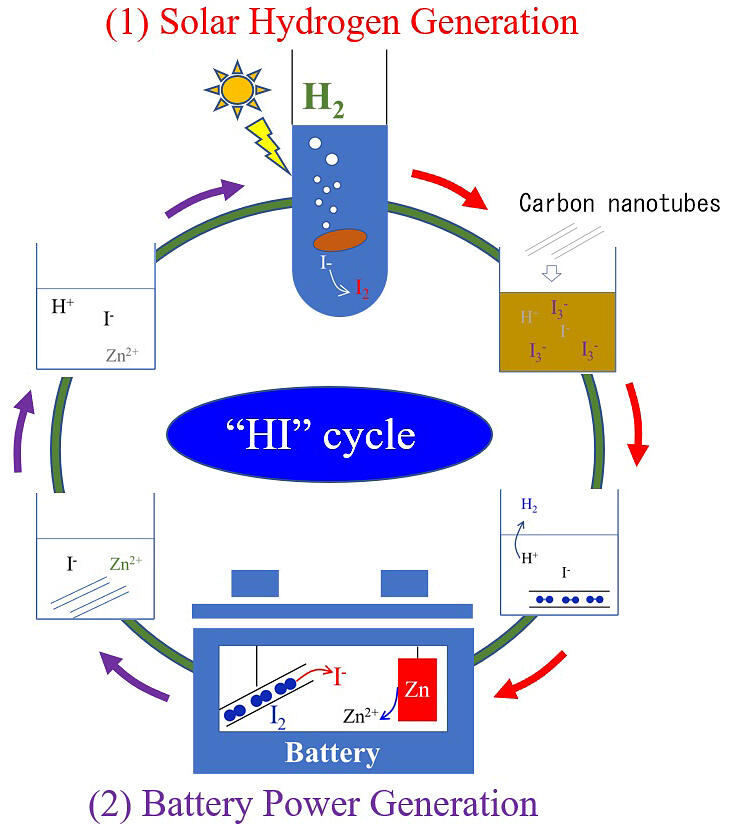Green hydrogen, which is produced using electricity from renewable sources, is expected to become the next-generation energy source in efforts to achieve carbon neutrality. Currently, the only commercially available hydrogen is gray hydrogen, which is produced by decomposing natural gas, a fossil fuel. Because green hydrogen is difficult to generate, methods are being developed to produce hydrogen without CO2 emissions using natural gas in the same way as that used for gray hydrogen generation. However, a fundamental solution to this problem has not been obtained.
Assistant Professor Yosuke Ishii and Professor Shinji Kawasaki of the Graduate School of Engineering at Nagoya Institute of Technology have developed a new energy cycle that can achieve repeated solar hydrogen and battery power generation. This achievement was published in Physics Status Solidi.

Provided by Nagoya Institute of Technology
Highly efficient hydrogen generation can be expected using the oxidation of iodide ions as a paired reaction to hydrogen generation. The research group confirmed that hydrogen generation is actually more efficient with iodine than when using the oxygen-evolution reaction as a paired reaction.
In the oxidation of iodide ions, the iodine molecules obtained as by-products during hydrogen generation inhibit hydrogen generation. However, the group found that long-term hydrogen generation can be achieved if the iodine molecules are adsorbed onto single-walled carbon nanotubes.
Furthermore, the group constructed a battery using the iodine stored in single-walled carbon nanotubes as the positive electrode and metallic zinc as the negative electrode and confirmed that the battery was capable of generating electricity. This power-generation strategy returned iodide ions to the solution, indicating that they can be reused for the hydrogen-generation reaction. This cycle was named the hydrogen iodide (HI) cycle.
The research group will continue to optimize the experimental conditions, such as by improving the photocatalyst, to achieve even more efficient hydrogen generation. They will also conduct experiments using single-walled carbon nanotubes with different diameters and lengths to further extend the life of the HI cycle.
Journal Information
Publication: physica status solidi (RRL) - Rapid Research Letters
Title: Hydrogen Iodide Energy Cycle to Repeat Solar Hydrogen Generation and Battery Power Generation Using Single-Walled Carbon Nanotubes
DOI: 10.1002/pssr.202300236
This article has been translated by JST with permission from The Science News Ltd. (https://sci-news.co.jp/). Unauthorized reproduction of the article and photographs is prohibited.




